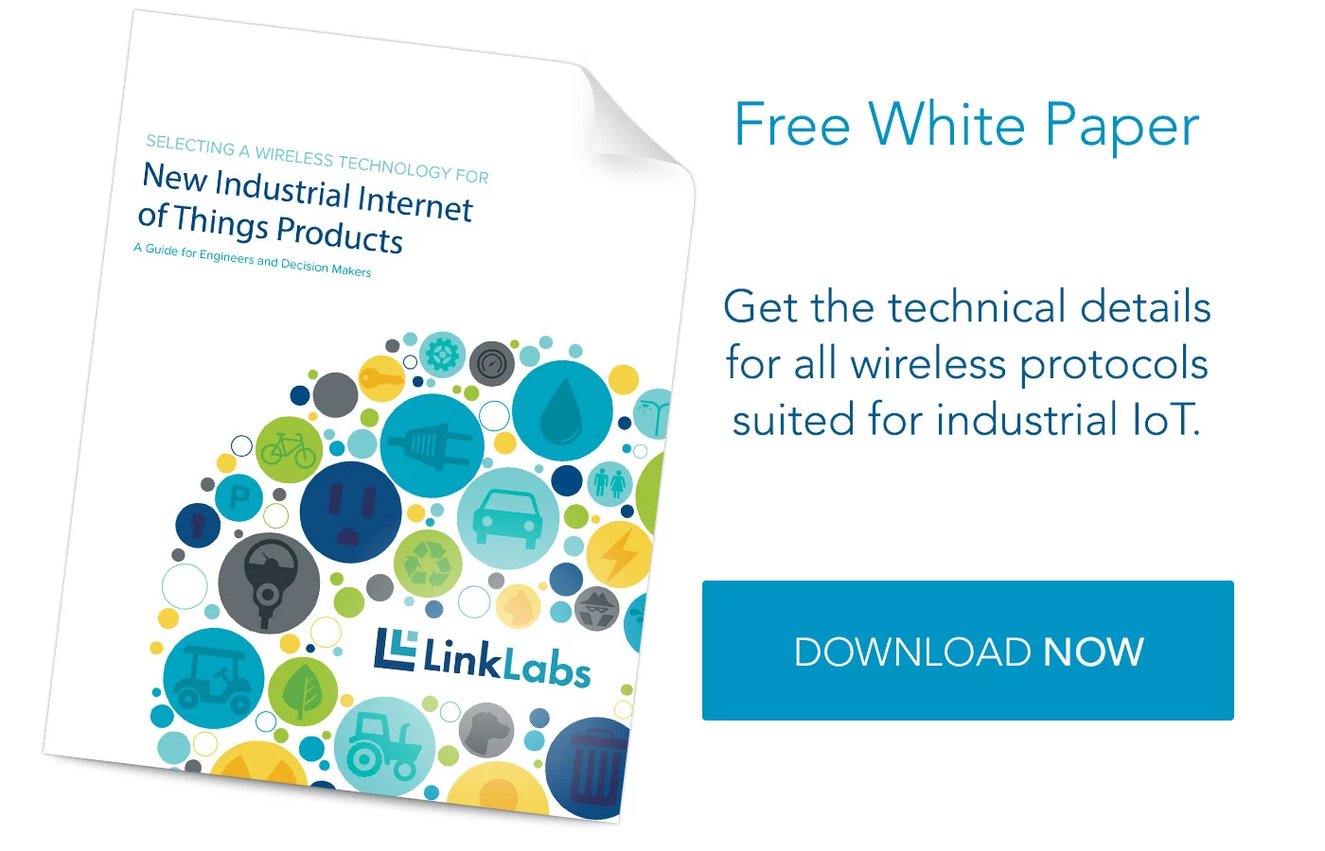Forbes dubbed 2014 as the year of the Internet of Things and Gartner followed up by saying the IoT is at the peak of its hype cycle. And as is the case with any wild trend, a whole new language has popped up around it. Actually, engineers will have known these terms for years, but it seems like jargon usage has been at an all-time high recently.
So we decided this was the best time to create an Internet of Things dictionary as we head into 2015. Use this as your pocket guide for all IoT discussions around the office.
Here are 25 Internet of Things terms to understand before the IoT World Forum:
- Internet of Things (IoT) - The concept to allow internet based communications to happen between physical objects, sensors, and controllers.
- 6LoWPAN - An acronym that combines the latest version of the Internet Protocol (IPv6) and Low-power Wireless Personal Area Networks (LowPAN). This concept allows for the smallest devices with limited processing ability to transmit information with a battery life that lasts for years.
- Advanced Encryption Standard (AES) - The specification for encryption of electronic data established in 2001. Operates on a public/private key system, and planning for key management is an important aspect when implementing AES encryption.
- Application Programming Interface (API) - A way for computers to talk to hardware or software platforms in a less complicated way. Third parties use other company’s API platforms as a point of integration.
- Bluetooth Low Energy (LE) - Also known as Bluetooth 4.0, this is a wireless, personal-area network with short range and low power consumption that allows for objects to transmit data. This is the “next generation” of Bluetooth that solves many of the pairing and performance headaches from earlier Bluetooth.
- Embedded Software - Instruction code that runs on hardware microcontrollers. Usually it is performing specific low-level functions, often without using an operating system.
- Gateway - A point on a network that receives information from many other points on the network and transmits information to another network. The router for your home internet is one type of gateway.
- General Packet Radio Service (GPRS) - A wireless communications standard on 2G and 3G cellular networks which supports a number of bandwidths and provides data rates of 56-114 kbps. As cellular companies move to more advanced networks, GPRS networks may be more cost-effective for IoT networks.
- Industrial, Scientific, and Medical (ISM) Band - An unlicensed part of the RF spectrum used for general purpose data communications. In the US, the ISM bands are 915MHz, 2.4 GHz, and 5.5 GHz, whereas 2.4 GHz is the global unlicensed frequency, and has increasing amounts of interference.
- Link Budget - An accounting of all of the losses in a wireless communication system. In order to “close the link” enough RF energy has to make it from the transmitter to the receiver. (Losses include antennas, structural attenuation, propagation loss, etc.)
- Machine to Machine (M2M) - A broad term that describes technology that allows for one connected device to communicate and exchange information with another connected device, without the assistance of a human.
- Media Access Control (MAC) - The “layer 2” in a network that allows the physical medium (radio waves or wire signals) to be organized to pass data back and forth. For low-rate data wireless applications, the MAC has many implications on performance.
- Mote - A trendy way of saying “endpoint” in IoT. This terms usually refers to some generic sensor out in the physical world.
- Near-Field Communication (NFC) - Low power, low speed, short range radio communication standard that allows two-way communication between endpoints within very close proximity.
- Operational Technology (OT) - As opposed to IT, this refers to technologies associated with control and automation. If IT helps run business processes, OT helps execute the physical interactions that control value creation.
- Part 90 Bands - Small parts of the RF spectrum that are made available in small areas to businesses for data or voice communications. Many “smartgrid” providers use part 90 licenses for their wireless data.
- Radiofrequency (RF) - Radio waves. This term generally means “wireless communication” when referred to in IoT discussions.
- Radio Frequency Identification (RFID) - Generally speaking, this is the use of strong radio waves to “excite” enough current in a small tag to send a radio transmission back. It works over short range, and only for small amounts of data.
- RF Geolocation - A general term that applies to “finding” a radio transceiver with another. GPS is a good example. A good rule to remember is that to do RF geolocation well, you need a large RF bandwidth.
- Software-defined network (SDN) - An approach to networking that decouples control of information flow from the hardware and gives it to a software controller. This allows for less data to travel wirelessly, making it a potential strategy for IoT networks.
- Structure Attenuation - The loss in intensity of radio waves through a medium (like radio waves through a brick wall).
- Transmission Control Protocol/Internet Protocol (TCP/IP) - The core standard protocol for internet-based communications. Some wireless systems “break” TCP/IP in order to lower the overhead of the on-air signals.
- TV Whitespace - A new FCC program that makes unused TV station bands available for temporary and controlled use in a small geographic area. This is used mostly by rural internet service providers and wireless microphone providers.
- Ultra-Wide Band - A “spark gap” transmitter that emits a very weak, very wide (in frequency) pulse of RF energy. This signal is used mostly for localizing signals. Wide signal bandwidths are good for measuring distance.
- ZigBee/Z-Wave - Short-range, low-power wireless standards used for sensing and control, typically used for personal or home area networks, or in a wireless mesh for longer-range networks. Like 6LoWPAN, designed for low data-rate and battery-powered applications.
Write-in candidates:
We'll be adding more terms as they come up in conversation. Here are our current additions:
- Industrial IoT (IIoT) - Essentially this is M2M communication for machinery and other industrial applications. Machinery and equipment can send back real-time information to an application so operators can better understand how efficiently that equipment is running.
- IoT Healthcare - Also known as "connected health", this term encompasses all advancements in the medical industry that relate to M2M communication and sensing.
- Low Power Wide Area (LPWA) - LPWA networks are built specifically for M2M communications and offer long-range, low-power consumption. They solve cost and battery life issues that cellular technology cannot, and solve range issues that technologies like Bluetooth or Bluetooth LE struggle with.
- Low Power Wireless Sensor Network - A group of spatially distributed, independent devices that collect data by measuring physical or environmental conditions with minimal power consumption.
- RF Sensitivity - The minimum magnitude of input signal you need based on a specified signal-to-noise ratio to achieve at minimum error rate.
- Smart Meter - An electronic device that collects data about consumption of energy (gas, electric) and communicates it back to the energy company and/or consumer.
- SX1272 - First generation LoRa (Long Range) wireless transceiver from Semtech, which introduced a new type of PHY layer modulation (LoRa). This technology dramatically increases the range of sub-GHz RF communications.
- SX1276 - Follow on to SX1272 from Semtech, and this part includes frequency coverage for more unlicensed bands worldwide, and several modes that increase receive sensitivity.
- 802.11ah - New WiFi protocol that utilizes sub 1 GHz license-exempt bands as opposed to conventional WiFi that operates in the 2.4 GHz and 5 GHz bands.
Think we’re missing something? What would you add to the list? Let us know in a comment below.




